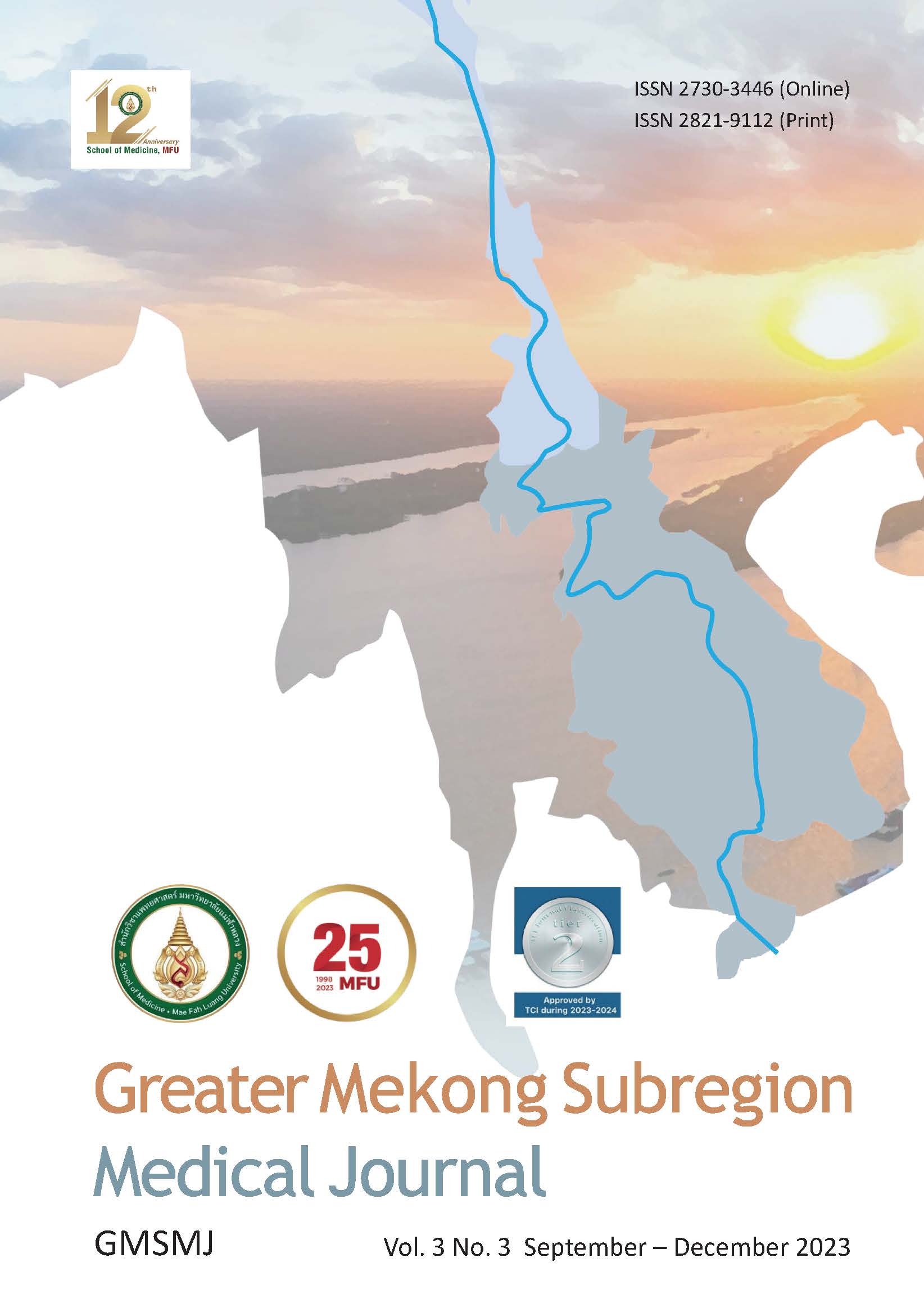Post-Mortem Investigation at the Scene of Death in Thailand
Keywords:
Corpse, Crime Scene, Criminal Procedure Code, Post-Mortem ExaminationAbstract
Investigating a scene of death is a legal procedure that require the participation of medical professionals and cannot be avoided. This article aims to provide essential information about the basic procedures for investigating a crime scene and conducting a post-mortem examination in accordance with Thai laws, to ensure that readers can perform their jobs correctly and with confidence. The topics covered include the reasons for conducting a post-mortem examination according to Section 148 of the Criminal Procedure Code, the role of physicians and the post-mortem examination team, the preparation process before post-mortem examinations, data inquiry when a doctor arrives at the location where a corpse is found, techniques for photographing and collecting evidence, the forensic examination of a corpse, how to evaluate the time of death using rigor mortis, livor mortis, and the stages of decomposition, and recommendations for providing detailed feedback on post-mortem examination reports. In summary, examining the scene of death is a necessary procedure that all doctors must be able to carry out within the framework of the law. It is an important mechanism for promoting justice in society, relying on medical and scientific knowledge for the benefit of the general public.
References
Royal Thai Government Gazette. Criminal Code Procedure Act, Buddhist Era 2477. Bangkok: Office of the Prime Minister and Royal Thai Government Gazette; 1935.
Royal Thai Government Gazette. Criminal Code Procedure Act, Buddhist Era 2499. Bangkok: Office of the Prime Minister and Royal Thai Government Gazette; 1956.
Royal Thai Government Gazette. Supplementary Amendment Act on Criminal Procedure Code (Version 21) B.E. 2542. Bangkok: Office of the Prime Minister and Royal Thai Government Gazette; 1999.
Royal Thai Government Gazette. Royal Decree Extending the Enforcement Period of Section 7 of the Supplementary Amendment Act on Criminal Procedure Code (Version 21) B.E. 2542 B.E. 2565. Bangkok: Office of the Prime Minister and Royal Thai Government Gazette; 2022.
Knight B, Saukko PJ. Knight's forensic pathology. Fourth edition. Boca Raton: CRC Press, Taylor & Francis Group; 2016. https://doi.org/10.1201/b13266
Gonzalez-Billandon J, Aroyo AM, Tonelli A, Pasquali D, Sciutti A, Gori M, et al. Can a Robot Catch You Lying? A Machine Learning System to Detect Lies During Interactions. Front Robot AI. 2019 Jul 31;6:64. https://doi.org/10.3389/frobt.2019.00064
Badiye A, Kapoor N, Menezes RG. Chain of Custody. In: StatPearls [Internet]. Treasure Island (FL): StatPearls Publishing; 2022 [cited 2022 May 30]. Available from: http://www. ncbi.nlm.nih.gov/books/NBK551677/
Schröder AS, Müller F, Gehl A, Sehner S, Anders S. Post-mortem development of conjunctival petechiae following temporary prone position. Forensic Sci Int. 2012; 223 (1-3):e53-5. doi: 10.1016/j.forsciint.2012.08.045. https://doi.org/10.1016/j.forsciint.2012.08.045
Almulhim AM, Menezes RG. Evaluation of Postmortem Changes. In: StatPearls [Internet]. Treasure Island (FL): StatPearls Publishing; 2022 [cited 2022 May 30]. Available from: http://www. ncbi.nlm.nih.gov/books/NBK554464/
Downloads
Published
How to Cite
Issue
Section
License

This work is licensed under a Creative Commons Attribution-NonCommercial-NoDerivatives 4.0 International License.



